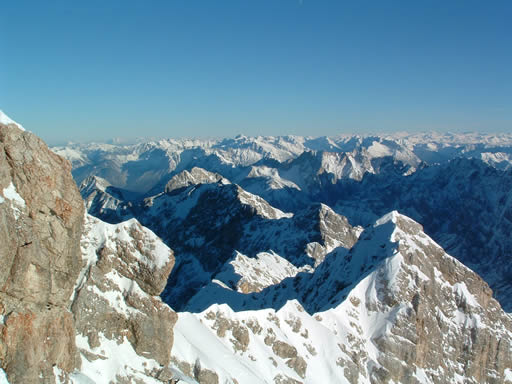The Alps are the largest and highest mountains in Europe, where Austria, Germany, France, Switzerland, Liechtenstein, Italy and Slovenia share.

They are climate and watershed between Central and Southern Europe. The Alps close north from the Gulf of Genoa to the Apennines to include in a wide arc to the west, the Po Valley, branch out in Lac du Bourget, the French and Swiss Jura and after the 750 km extension westöstlicher fan in the east front of the mountain and westpannonischen hill country on the Danube near Vienna. In the northeast continuation of the Carpathians in the southeast of the Dinaric karst in the mountains. In the north, gradually waste to the German Alpine foreland, in the south to the Po Valley Waste steeper. Total length of the Alps from Genoa to Vienna about 1200 km, width of 150-200 km, in the east to 300 km. Peak heights in the most important mountain sticks mostly from 3000 to 4300 m, the highest peak (Mont Blanc) 4808 m.
 Origin
Origin
The Alps are a ceiling and folds of the mountains from the tertiary period, which is 65-2 million years ago covered. On the high mountains, they were by mountain uplift of the folded body, which continues to the present. Powerful sediments at the bottom of a big ocean between Europe and Africa (Pre-Med, Tethys) of Paleozoic to Tertiary have been due to pressure from the south as a result of the northward-facing Ur-African movement (continental drift), especially in the tertiary torn from the ground, in large blankets on top of each other repeatedly pushed and folded. This has resulted in Europe extended to the south (Neoeuropa). In the Northern and Southern Alps form the marine sediments, especially limestone and dolomite, the mountains in the Central Alps are also crystalline rocks of the deeper subsoil. The Alps are still growing every year, a few millimeters. Your current appearance, the Alps, but only through the ice ages and the removal by glaciers and rivers receive. The current form of the mountain were the Alps by river erosion, especially by ablating the activity of the glaciers during the ice ages. The young geological age of the Alps will be visible to the rugged cliffs, the sharp ridges and deep valleys and steep gradients with imbalanced. The Alps are part of the erdumspannenden Alpide mountain system, which include the Atlas in North Africa, the Hindu Kush and Himalayas in Asia and the Americas include Cordillera.
Outline
Vertical: Region of the Alps to the upper timberline (1500-2000 m), Central Alps to the snow line (2400-3100 m) above the high Alps. - Horizontal: The line-Splügen Rheintalflug-Lake Como is considered boundary between Eastern and Western Alps. In the Eastern Alps are mainly crystalline Central Alps (Rhaetian, Bernina, Ortler, Oetztaler, Zillertaler Alpen, High and Low Tauern and Norische Alps) by large valleys lines from the Northern Calcareous Alps (Rätikon, Allgau, Lechtal, North Tyrol, Salzburg and Austrian Alps) and the Southern Limestone Alps (Bergamo, Trentino Alps, Dolomites, Karnische, Julian Alps and Karavanke) separated. In the Western Alps is a series of crystalline central massifs (Mercantour, pelvoux, Belle Donne, Grandes Rousses, Mont Blanc, the Aar and Gotthard massif) through valleys more or less sharply from a gneiss zone in the south (sea, Cottische, Grajische, Ticino and Valais Alps) and a Kalkzone in the west and north (Provençal Alps, Dauphinéer, Savoy, Bern, Glarus Alps) divorced.
Tourism
A quarter of the world tourism takes place in the Alps. These include winter sports tourism (for example, in the Kitzbüheler Alps, Zermatt, Saas-Fee, St. Moritz), as well as mountaineering tourism, recreation in alpine lakes, city tours (Innsbruck, Zurich, Lucerne, Ljubljana, Merano) or tourism for extreme sports. For many Alpine communities, tourism is the only source of income has become. Environmentalists and many locals complain but now increasingly the damage that mass tourism in the Alps and are causing more and more often on the frontiers of tourism in the Alps out. So more and more routes through the Alps and the village built structures destroyed. Moreover, the increasingly appearing garbage problem. Due to the progressive expulsion of ski areas as increasing the risk of avalanches, which in recent years increasingly also to have deaths.










 test wrote on
test wrote on













